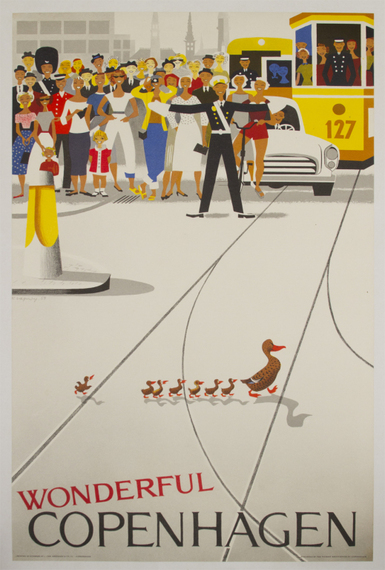Co-written with Steffen Herskind
Societies are usually founded on a set of values and beliefs while holding a vision of the type of future they wish to create. These basic premises, to a large extent, determine the world in which they live. So with our focus on the Nordic Model, what may we learn from the 'happiest people on earth?'
No one lives in Scandinavia for the weather or the tax system; however, if one wants a safe, reliable, healthy and sustainable life it presents an excellent option.
The Nordic Model is the Scandinavian countries unique model for organizing society. This model combines free market capitalism with a comprehensive welfare state and collective bargaining at the national level.
The countries are small, everyone closely connected and thus interpersonal trust is high. Everyone is perceived as equal and society is non-heretical so, one might easily meet the minister of foreign affairs while bicycling through the streets of Copenhagen.
Wealth is more evenly distributed, with a factor 40 differential between high and low incomes, compared to a factor 300 in America. When a progressive tax is applied, the difference between rich and poor is the difference between driving a Kia or a BMW.
The government model functions well and is largely trusted by the citizens. Childcare, infrastructure and educational systems are excellent, which attracts international businesses and multinational corporations such as Microsoft, Apple and IBM.
Citizens have an unusually high-risk willingness and even more important are unusually comfortable with ambiguity. This makes them excellent business people and entrepreneurs and both Stockholm and Copenhagen have become rising startup ecosystems that have resulted in six Unicorns.
So, where did the Nordic Model come from and how did it develop? The short answer is through the nasty Viking habit of raping, pillaging and plundering, along with wars, international travel and commerce. Although the Vikings may have developed an infamous reputation during their extensive travels throughout the world, to their credit, they were also fine tradesmen and great collaborators.
They engaged in extensive trading networks throughout the known world to the benefit of economic development in Europe. In fact, Scandinavia's economic position in the world today would not have been the same without the seafaring Viking's influence, since eighteen percent of all the world's goods and oil is still transported on Danish ships.
Interestingly enough, the makeup of a modern day Viking starts with the educational system, collaborative problem solving, critical reasoning, and the international perspectives that characterize the Nordic Model of Education.
Their fundamental belief is that, "It is better to stand on each other's shoulders than to step on each other's toes." This means that collaboration is better than competition and this belief has been incorporated into the Nordic Model of Education. It seeds project-based education where groups of students solve a problem by applying theories obtained in the classroom and it strengthens the student's critical reasoning because only strong arguments count. International perspectives are also incorporated into everyday Nordic teachings and challenges are seen from a broader perspective.
These fundamentals make up the strong cocktail known as the Nordic Model of Education that is now being expanded outside the boundaries of Scandinavia. Recently, Niels Brock, a hundred and thirty year old business school in Copenhagen, acquired the California International Business University (CIBU) a non-profit, private university in San Diego, California, known for its culturally diverse student body. In addition to applying the Nordic Model of Education, it will leverage Scandinavian Design, as well as innovation and entrepreneurship with a Scandinavian twist providing a unique hybrid model to a business education. In other words, the Vikings have once again returned to the New World.
Special thanks to Steffen Herskind for co-writing and researching this article
